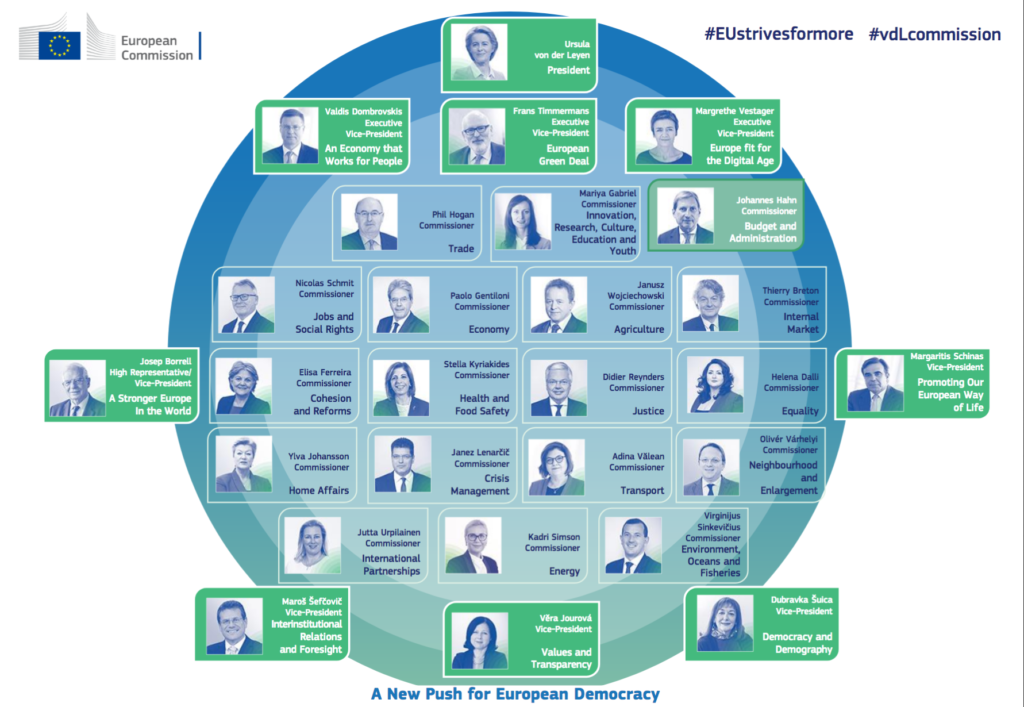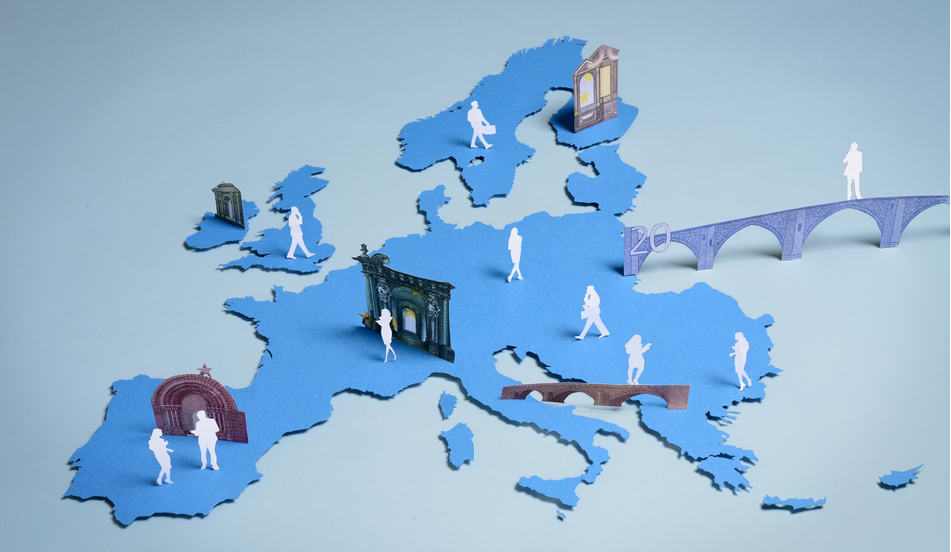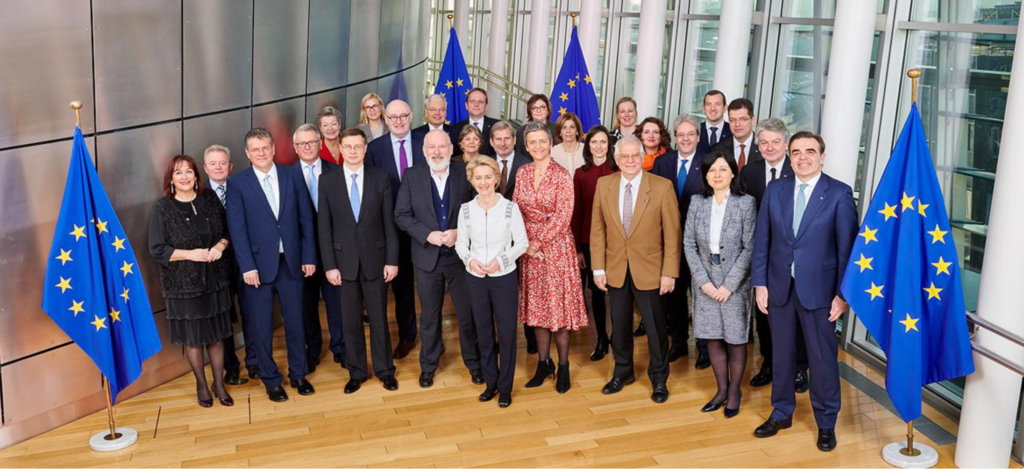For the next long-term EU budget 2021-2027, the Commission proposes to modernise Cohesion Policy, the EU’s main investment policy and one of its most concrete expressions of solidarity.
Regional Development and Cohesion Policy beyond 2020: The New Framework at a glance
A focus on five investment priorities, where the EU is best placed to deliver
Five main objectives will drive EU investments in 2021-2027: Regional development investments will strongly focus on objectives 1 and 2. 65% to 85% of ERDF and Cohesion Fund resources will be allocated to these priorities, depending on Member States’ relative wealth.

Smarter Europe, through innovation, digitisation, economic transformation and support to small and medium-sized businesses
a Greener, carbon free Europe, implementing the Paris Agreement and investing in energy transition, renewables and the fight against climate change
a more Connected Europe, with strategic transport and digital networks
a more Social Europe, delivering on the European Pillar of Social Rights and supporting quality employment, education, skills, social inclusion and equal access to healthcare
a Europe closer to citizens,by supporting locally-led development strategies and sustainable urban development across the EU.
A more tailored approach to regional development
Cohesion Policy keeps on investing in all regions, still on the basis of 3 categories (less-developed; transition; more-developed).
The allocation method for the funds is still largely based on GDP per capita. New criteria are added (youth unemployment, low education level, climate change, and the reception and integration of migrants) to better reflect the reality on the ground. Outermost regions will continue to benefit from special EU support.
Cohesion Policy further supports locally-led development strategies and empowers local authorities in the management of the funds. The urban dimension of Cohesion Policy is strengthened, with 6% of the ERDF dedicated to sustainable urban development, and a new networking and capacity-building programme for urban authorities, the European Urban Initiative.
Simplification: shorter, fewer, clearer rules
80 simplification measures in cohesion policy 2021-27
For businesses and entrepreneurs benefiting from EU support, the new framework offers less red tape, with simpler ways to claim payments using simplified cost options. To facilitate synergies, a single rulebook now covers 7 EU funds implemented in partnership with Member States (“shared management”). The Commission also proposes lighter controls for programmes with good track record, with an increased reliance on national systems and the extension of the “single audit” principle, to avoid duplication of checks.

A more flexible framework
The new framework combines the necessary stability in investment planning with the appropriate level of budgetary flexibility to cope with unforeseen events. A mid-term review will determine if changes in the programmes are needed for the last two years of the funding period, based on emerging priorities, performance of the programmes and the most recent Country-Specific Recommendations.
Within certain limits, transfers of resources will be possible within programmes without the need for a formal Commission approval. A specific provision makes it easier to mobilise EU funding as of day one in the event of a natural disaster.
A strengthened link with the European Semester and the Union’s economic governance
Cohesion Policy supports reforms for an investment-friendly environment, where businesses can thrive. Full complementarity and coordination with the new, enhanced Reform Support Programme will be ensured.
Country-Specific Recommendations formulated in the context of the European Semester will be taken into account twice over the budgetary period: in the beginning, for the design of Cohesion Policy programmes, and during the mid-term review. To further set the right conditions for growth and job creation, new “enabling” conditions will help remove barriers to investments. Their application will be monitored throughout the financial period.
More opportunities for synergies within the EU budget toolbox
The single rulebook covering Cohesion Policy funds and the Asylum and Migration Fund will facilitate the setting up of local migrant integration strategies supported by EU resources used in synergy; the Asylum and Migration Fund will focus on migrants’ short-term needs upon arrival while Cohesion Policy will support their social and professional integration. Outside of the single rulebook, synergies will be made easier with other EU instruments, like the Common Agricultural Policy, Horizon Europe, the LIFE programme or Erasmus+.
Interreg: removing cross border obstacles and supporting interregional innovation projects
Interregional and cross-border cooperation will be facilitated by the new possibility for a region to use parts of its own allocation to fund projects anywhere in Europe jointly with other regions.
The new generation of interregional and cross-border cooperation (“Interreg”) programmes will help Member States overcome cross-border obstacles and develop joint services. The Commission proposes a new instrument for border regions and Member States eager to harmonise their legal frameworks, the European Cross-Border Mechanism.
Building on a successful pilot action from 2014-2020, the Commission proposes to create the Interregional Innovative Investments. Regions with matching ‘smart specialisation’ assets will be given more support to build pan-European clusters in priority sectors such as big data, circular economy, advanced manufacturing or cybersecurity.
Reinforced rules for better performing EU investments
All programmes will still have a performance framework with quantifiable targets (number of jobs created or additional access to broadband). The new framework introduces an annual performance review, in the form of a policy dialogue between programme authorities and the Commission. Performance of the programmes will also be assessed during a mid-term review. For transparency reasons, and so citizens can follow the progress made, Member States will have to report all implementation data every two months and the Cohesion Open Data Platform will be automatically updated.

An increased use of financial instruments
Grants alone cannot address the significant investment gaps. They can be efficiently complemented by financial instruments, which have a leverage effect and are closer to the market. On a voluntary basis, Member States will be able to transfer a part of their Cohesion Policy resources to the new, centrally managed InvestEU fund, to access the guarantee provided by the EU budget. Combining grants and financial instruments is made easier and the new framework also includes special provisions to attract more private capital.
More communication efforts to improve the visibility of Cohesion Policy
For a Europe ever closer to citizens, more emphasis is put on the need to better communicate the positive results of Cohesion Policy. Member States and regions have reinforced requirements in terms of communication, such as the organisation of events for the opening of big EU-funded projects and the development of social media outreach plans.
At the same time, communication on EU-funded projects is simplified, with a single branding covering all different EU funds, a single portal displaying all available funding for businesses and a single project database run by the Commission.
Click here to read 2020 February’s edition of Europe Diplomatic Magazine


